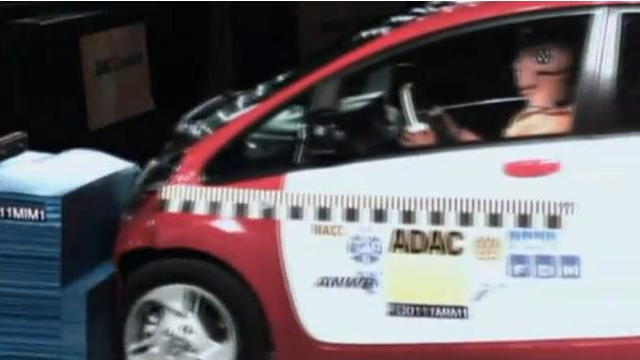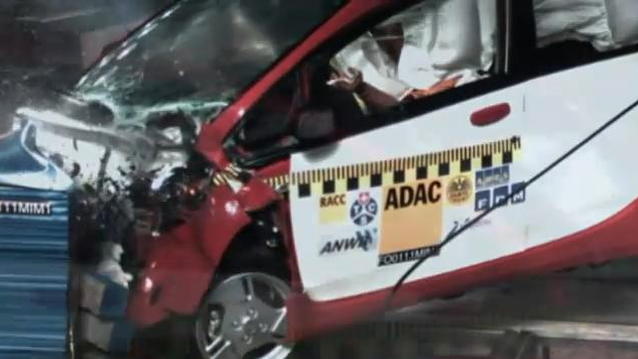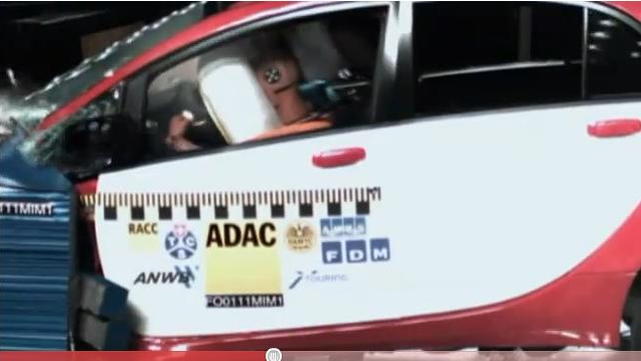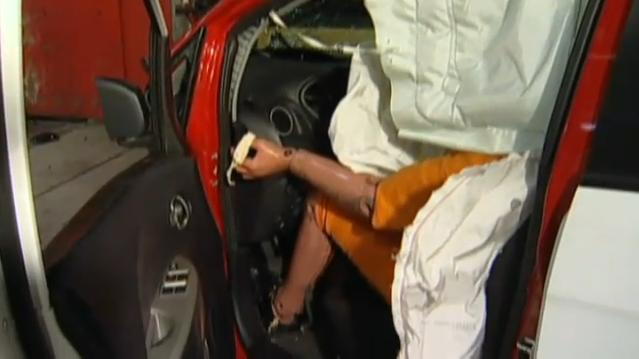It's both true and not-so-true: Small cars are dangerous in a crash.
It's true, in that the laws of physics indicate a heavier object will have more momentum than a lighter object when they collide, meaning the small one gets displaced.
But it's not so true if you're looking at absolute levels of passenger safety, since all cars--and small cars in particular--have gotten much, much safer overall.
Electric minicar, meet barrier
The latest demonstration of how safe small cars can be is the crash test video at bottom, in which a Mitsubishi i-MiEV electric car is crashed into a barrier at 40 mph by the German auto club ADAC. The passenger cell survives intact, the airbags inflate to protect the test dummies, and the doors open afterward.

Mitsubishi i-MiEV electric minicar crash-tested by ADAC, December 2010, screen capture
Equally important, the battery pack remained undamaged and the car's safety system automatically switched off its high-voltage power systems, removing any risk to emergency responders.
In a second test, a 3,000-pound weight was slammed into the rear of the hapless i-MiEV at 50 mph, duplicating a U.S. test required by the National Highway Traffic Safety Administration. Again, the car's electric powertrain and high-voltage systems and the passenger compartment both remained intact.
Sold in the U.S.
That same vehicle will be sold in the States as the 2012 Mitsubishi 'i', although in modified form to adapt the car for U.S. barrier tests, which take place at different angles and under different conditions than the European ones.

2012 Mitsubishi
The little battery electric car is still small, though, measuring just 145 inches long, 62.5 inches wide, and 63. 5 inches high, with a total weight of 2,580 pounds..
To put it on sale in the U.S. market, the body structure of the 2012 'i' has been strengthened. Its bumpers and their plastic covers are new and wider than original.
And it has been fitted with larger airbags that deploy at variable rates, depending on how heavy the seat occupant is. Other standard fittings include active stability control and a tire-pressure monitoring system.
Safe Smart, hazardous classic
The same protection for passengers inside a body structure can also be seen in videos of a tiny Smart ForTwo hitting a barrier at a jaw-dropping 70 mph. The results there--both doors open--are perhaps even more impressive, considering that the car holds only two people and measures just 106 inches long.
However, as the Fifth Gear commentators note, while the Smart's body structure remained intact, the decelerative forces on the organs of anyone inside the car as they move from 70 mph to nothing in less than a second mean that human passengers would be unlikely to survive.
For the ultimate demonstration of how much auto safety has improved over half a century, a video from the Insurance Institute for Highway Safety (IIHS) shows how gruesome the results are for one vehicle when a 1959 Chevrolet Bel Air and a 2009 Chevrolet Malibu hit each other head on. Hint: In this case, older is not better.
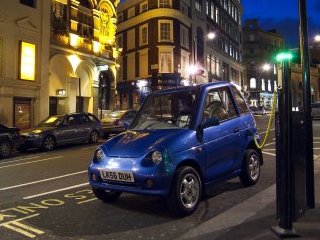
G-Wiz charging in the U.K.
Horrifying G-Wiz
An equally horrifying outcome occurred when the BBC's Top Gear magazine crashed a G-Wiz electric car into a barrier; it essentially collapsed. The G-Wiz, it's worth noting, is a low-speed neighborhood electric vehicle--and not a real car. A video clip shows what that really means for passengers.
In any event, check the video below to see how safe a modern small car--and an all-electric small car at that--can be.
[AutoBild]

